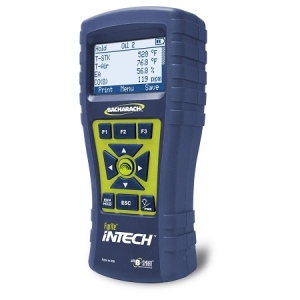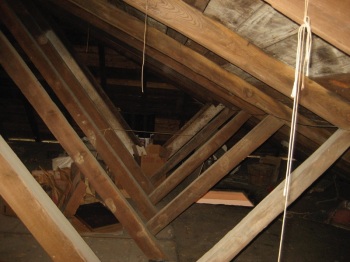The recently updated OSHA Confined Spaces rule is having a significant impact on many residential construction companies. The rule has been expanded to define most attics and crawlspaces as “confined spaces,” many of which will require permitting, testing, and even a second worker to stand by in case evacuation is required. The expanded OSHA Confined Spaces rule went into effect on August 3, 2015, and reaches to all companies from general contractors to HVAC companies to home inspectors. Our primary concern in this article is to understand when testing is required, and how this can be implemented efficiently and affordably.
Defining a Confined Space
The OSHA rule defines a confined space as one that meets all the following criteria:
(1) Is large enough and so configured that an employee can bodily enter it;
(2) Has limited or restricted means for entry and exit; and
(3) Is not designed for continuous employee occupancy.
If a space is determined to be a “confined space,” the next step is to determine if it is a “permit space.” A permit space is one that contains a hazard or potential hazard. If a space is found to be a permit space it will trigger other requirements, including permits, testing, etc. So how to determine a permit space? It meets one or more of the following criteria:
(1) Contains or has a potential to contain a hazardous atmosphere;
(2) Contains a material that has the potential for engulfing an entrant;
(3) Has an internal configuration such that an entrant could be trapped or asphyxiated by inwardly converging walls or by a floor which slopes downward and tapers to a smaller cross-section; or
(4) Contains any other recognized serious safety or health hazard.
Proving Safety
These criteria require a great deal from the contractor frequenting attics or crawlspaces. To determine that a space is not a permit space you must prove that it does not contain, or even have the potential to contain, a hazardous atmosphere. Does the attic have a furnace in it? If the furnace is not burning correctly it could be filling the air with poisonous carbon monoxide (CO). Does the crawlspace have a gas line running through it? The gas could be leaking, building up toward a potential explosion. In both of these scenarios you would need to verify safety through testing the atmosphere.
If a confined space has no potential hazards such as a furnace or gas lines, a contractor can work without testing and permitting. It seems this will rarely be the case, especially in existing buildings. So in many instances the burden of proving the space is free of hazards will lie with the contractor. Assuming there is potential for unsafe conditions, you will need to verify that conditions are safe. And even if found to be safe, the OSHA Confined Spaces rule requires that the space be monitored at least periodically to ensure ongoing safe conditions.
Testing a Confined Space
There are many conditions that could make a confined space unsafe under the rule, ranging from frayed electrical wiring to the presence of a mountain lion (true story). Many such conditions can be ascertained visually, while others cannot. For the invisible threats, the OSHA Confined Spaces rule instructs that
“Before an employee enters the space, the internal atmosphere must be tested, with a calibrated direct-reading instrument, for oxygen content, for flammable gases and vapors, and for potential toxic air contaminants, in that order.”
While we might be thankful for the clarity given by naming oxygen and flammable gases, the phrase “potential toxic air contaminants” leaves the door wide open. Here the contractor must decide what potential contaminants may be present. Because of how common combustion appliances are in homes, it seems like testing for carbon monoxide (CO) should be very common, perhaps universal. But what about gases that occur very infrequently in a residential setting? High concentrations of hydrogen sulfide (H2S) are rarely encountered in homes, yet testing would be prudent if you suspect long term sewage leaking and breakdown in a crawlspace. Decisions on what potential hazards may exist, and thus what testing should be performed, will be left to the contractor.

Some combustion analyzers will test O2 and CO to help meet testing requirements. Pictured here is the Bacharach Fyrite Intech with field replaceable calibrated sensors.
Tools for Testing
At a minimum it looks like most contractors will need to test for sufficient oxygen (O2), the absence of combustible gas nearing its lower explosive limit (LEL), and the absence of carbon monoxide (CO). Fortunately there are many devices able to test these parameters, sometimes separately, sometimes all at once. The OSHA Confined Spaces rule allows for testing to be “periodic”; presumably on the condition that the intervening periods are not long enough for the potential hazard to threaten the occupants of the space. This “periodic” testing opens up testing possibilities to some contractors. For instance, if an HVAC technician already has a combustion analyzer that will test for ambient O2 and CO (as most will), they can make periodic tests with this unit. Other contractors and inspectors regularly protect themselves with CO monitors which could also be used for the OSHA testing. Other tools don’t fare as well: combustible gas detectors (gas sniffers), while reliable at detecting combustible gases, can seldom display LEL as a direct reading. But if a technician already has a combustion analyzer for measuring O2 and CO, adding an LEL monitor would allow compliance in most situations. For an all-in-one solution, there are many four-gas monitors available that will simultaneously test O2, LEL, CO, and H2S. While these represent a larger investment, they allow for continuous monitoring, are small enough to attach to a belt, and incorporate audible and visible alarms.
Calibration
Beyond having the correct test meters, the instruments will need regular calibration in order to meet OSHA Confined Spaces rule. The unit can be calibrated to manufacturers specs, or to those of a recognized calibration authority. For many personal gas monitors, calibration will be required at least every six months. These instruments often have an available calibration station that automates bump testing, calibration, and record keeping. If a combustion analyzer is being utilized to test O2 and CO, these usually require calibration once a year. Some analyzers such as the Bacharach Fyrite Intech, Bacharach Fyrite Insight Plus, and the Testo 320 feature pre-calibrated, field-replacable sensors. Just change out the sensors, enter the new codes, and the analyzer is within calibration again.
New Opportunities
Careful consideration of the conditions in which you will be working, along with utilizing tools already on hand, will allow many techs comply with the testing while making minimal additions to their tool kits. The LEL monitor will probably be the most frequent purchase. When looking at new tools, opportunities may exist to use the new equipment for multiple purposes, bringing both personal protection and new revenue streams. As with any tool purchase, consider lifespan and quality. Pay special attention to calibration cycles and methods, as these may amount to significant cost and hassle. Being intentional about how you implement the testing part of the OSHA Confined Spaces rule will help you to make the most of your investment in test equipment.
Please let us know if you have any questions about testing for the OSHA Confined Spaces rule. Ivy Tools will be happy to make recommendations that will help your company comply as efficiently and affordably as possible. You can call us at (877) 273-2311, or email us at [email protected]
More Information
OSHA Confined Spaces in Construction Rule
OSHA Confined Spaces Resource Center


